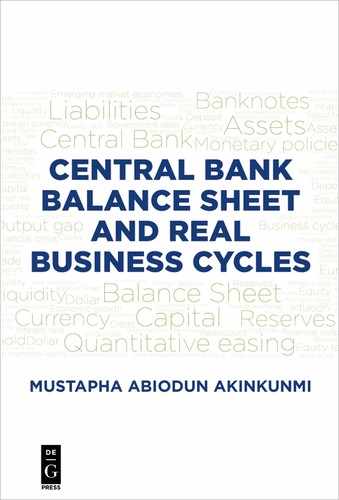0%
28Chapters
0-1Hours read
0kTotal Words
Table of Contents
- Cover
- Title Page
- Copyright
- Dedication
- Contents
- Chapter 1: Global Genesis of the Central Bank
- Chapter 2: Relevance of the Central Bank Balance Sheet
- Chapter 3: Components of Central Bank Balance Sheets
- Chapter 4: Analytical Framework of Central Bank Balance Sheets
- Chapter 5: Evolution of Central Bank Balance Sheets and Their Heterogeneous Dimensions
- 5.1 What Makes Central Bank Balance Sheets Special?
- 5.2 Historic Uses of Central Bank Balance Sheets
- 5.3 Composition of Central Bank Balance Sheet Liabilities
- 5.3.1 Central Bank Liabilities in Normal Times
- 5.3.2 Snapshot of Selected Economies’ Performance before the 2007–2008 Crisis
- 5.3.3 Country-by-Country Snapshots of Economic Structure Since 2005
- 5.3.4 A Look at the Balance Sheets: 2005 and 2006
- 5.3.5 Snapshot of Selected Economies’ Performance during the 2007–2008 Crisis
- 5.3.6 Snapshot of Selected Economies’ Performance Today
- 5.3.7 Central Bank Liabilities Today
- Conclusion
- Questions
- Chapter 6: Composition of Central Bank Balance Sheet Assets
- Chapter 7: Financial Ratios of the Central Bank Balance Sheet
- Chapter 8: Central Bank Operations
- Chapter 9: Real Business Cycles
- Chapter 10: Central Bank Balance Sheets and Real Business Cycles
- Chapter 11: Conclusion
- Appendix I: Central Bank Balance Sheets of Different Countries
- Appendix II: Abbreviations
- References
- Index
